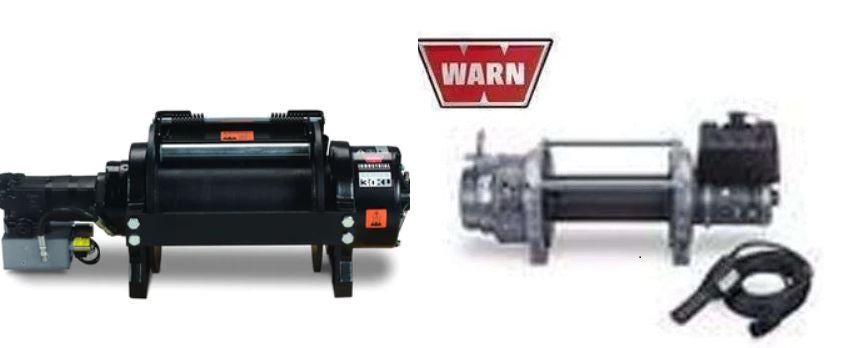
Understandingthe Power of Hydraulic Winches

Hydraulic winches have revolutionized the way industries approach heavy lifting and pulling tasks. Whether you're in construction, forestry, or off-road adventures, the capabilities of hydraulic winches can never be overstated. In this blog post, we'll delve into the world of hydraulic winches, exploring their working mechanisms, applications, and why they're a powerhouse in the realm of heavy-duty tasks.
Hydraulic winches basics
Hydraulic winches are devices that utilize hydraulic power to reel in or let out a cable, offering a robust and reliable solution for pulling heavy loads. Unlike their electric counterparts, hydraulic winches draw power from a hydraulic system, typically found in heavy machinery like excavators, cranes, and tow trucks.
How they work
The basic working principle of hydraulic winches involves the conversion of hydraulic energy into mechanical force. A hydraulic motor powers the winch, turning the drum to wind or unwind the cable. This mechanism provides consistent and powerful pulling force, making hydraulic winches an ideal tool for demanding and challenging tasks.
Diverse applications of hydraulic winches
Hydraulic winches find applications across a wide range of industries. In construction, they are used for hoisting materials and equipment, while in forestry, they prove invaluable for skidding and loading heavy logs. Off-road enthusiasts often rely on hydraulic winches to navigate challenging terrains, recovering vehicles stuck in mud or traversing steep slopes.
Advantages of hydraulic winches
As lifting and pulling tools, hydraulic winches have several advantages that distinguish them as invaluable equipment for several industries. Here is a summary of their advantages.
- Power and Efficiency
Hydraulic winches deliver high pulling forces, making them suitable for heavy-duty applications.
- Consistent Performance
The hydraulic system ensures consistent power output, even under heavy loads.
- Durability
Built to withstand rugged conditions, hydraulic winches are known for their durability and long service life.
- Versatility
Their ability to integrate with hydraulic systems in various heavy machinery makes them versatile for different applications.
How to choose the right hydraulic winch
When selecting a hydraulic winch, consider factors such as pulling capacity, line speed, and the specific requirements of your task. Assess the durability of the winch, including its resistance to harsh environmental conditions, to ensure it can withstand the demands of your industry.
Maintenance and care
To maximize the lifespan and performance of your hydraulic winch, regular maintenance is essential. This includes checking hydraulic fluid levels, inspecting cables for wear, and ensuring all components are in proper working condition. Regular maintenance not only prolongs the life of the winch but also ensures it operates safely.
Safety considerations
Safety is paramount when working with hydraulic winches. Prioritize proper training for operators, follow manufacturer guidelines, and implement safety measures such as using appropriate Personal Protective Equipment (PPE) and conducting regular equipment inspections.
Conclusion
Hydraulic winches are the undisputed heroes in industries that rely on heavy lifting and pulling. Their robust design, versatility, and consistent performance make them indispensable for a wide array of applications. Understanding the working principles, choosing the right winch for your needs, and implementing proper maintenance practices are the key to unlocking the full potential of hydraulic winches in your operations.
